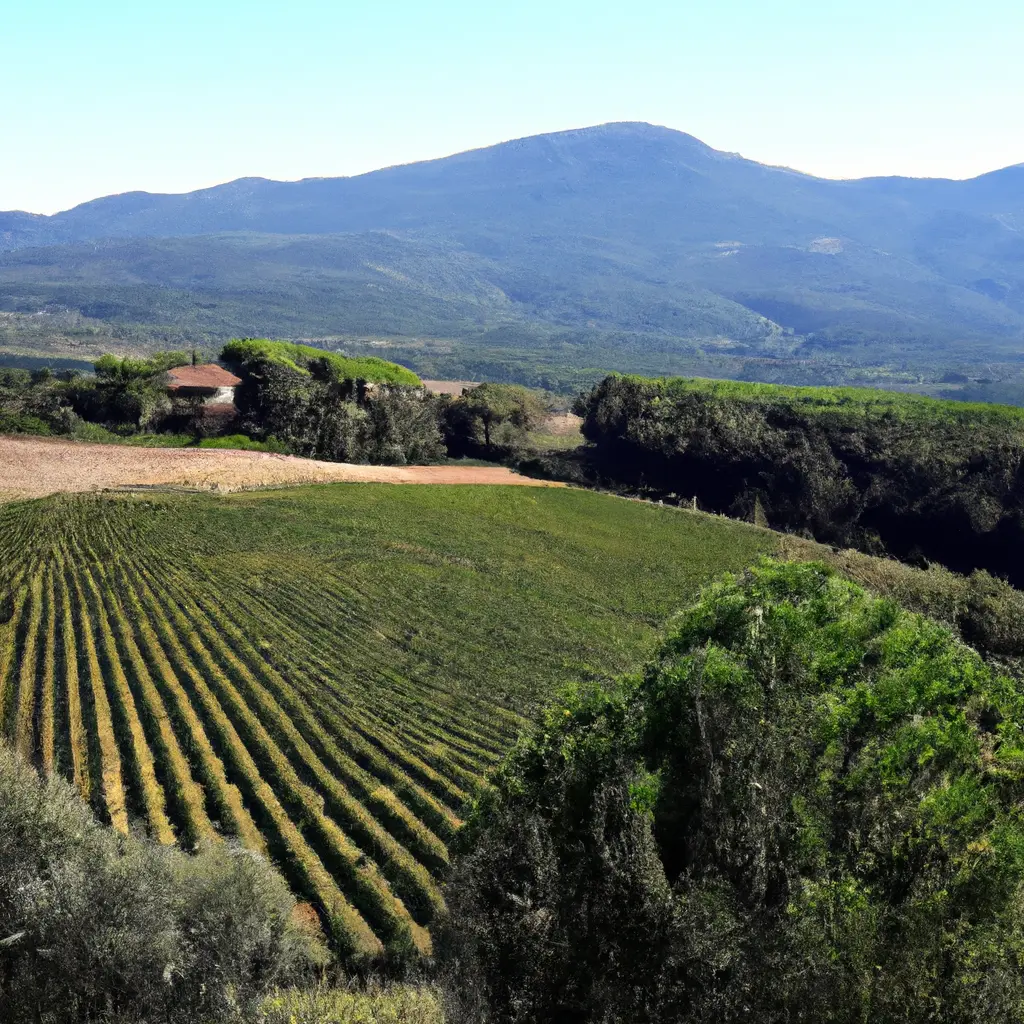Tuscan values from four excellent wineries

Vineyards in Grattamacco, Bolgheri Photo ©Tom Highland
When red wine is mentioned, you can't help but think ofTuscany.
Although Chianti Classico and Brunello di Montalcino are the most famous wines of this region, there are other areas that also produce valuable red wines. Let's take a look at the wines of one winery from four Tuscan territories: Bolgheri, Schianti Classico, Montalcino and Montecucco.
Grattamacco (Bolgheri)
Grattamacco is one of Bolgheri's leading wineries - the other two being Tenuta San Guido (Sassicaia) and Ornellaia - Grattamacco is located in the central-eastern sector of the Bolgheri appellation a short distance from the site, which offers spectacular views of''Bolgheri's best red wines, it is powerful and has a structure that allows it to keep for 15-25 years; thanks to the relatively high percentage of Sangiovese in this wine, the level of acidity is excellent and the wine retains its freshness for many years. It is one of Italy's greatest red wines, not only for its persistence, but also for its finesse and finesse. The 2020, with its perfect combination of flavors, is already delicious, but will drink well for another twenty years. (Grattamacco makes several other wines, including Bolgheri Rosso, which is lighter in flavor but has much in common with Grattamacco Bolgheri Superior, and it's excellent value for money; also for lovers of Vermeignino, Grattamacco's version is one of the best in Tuscany; it's bright and appealing right off the''release, but is also perfectly drinkable five to eight years after harvest, as my 2016 summer trial showed.)
Gagliole (Chianti Classico)
Gagliole - There are over 200 wineries in the Chianti Classico, so it's easy to see why some of them don't get the attention they deserve despite the quality of their wines. Gagliole is a great example of an excellent Chianti Classico winery that deserves more attention.
Gagliole has approximately 50 acres of vineyards in Schianti Classico, almost equally divided between Castellina in Chianti and Panzano; the latter area is an amphitheater of undulating hills that is some of the most valuable land in the appellation. Several examples of Chianti' are produced here'Classico, and each of them is of excellent quality, from Rubiolo, the winery's annual Chianti Classico to the beautifully styled Reserve (the current 2020 version is so typical of its origins and very attractive at 92 points), to the magnificent Grand Selectio with the tag of Gallule (Gallule was the ancient name of this winery). 100% Sangiovese, this is an outstanding example of what the Grand Selectzione category generally means, combining the ideal flavor qualities of the grape variety with very good acidity and excellent harmony, as well as a structure that allows storage for more than a decade. The current 2019 (95 points) is outstanding and one of the best Italian wines I have tasted in''this year.
Poggio di Sotto (Montalcino)
In an area where great wines have become almost commonplace, Poggio di Sotto is at the top of the quality pyramid. Long known as one of the most traditional producers of Brunello di Montalcino - aging exclusively in large Slavonian oak barrels - Poggio di Sotto today continues the philosophy and achievements made by original owner Piero Palmucci, who founded the winery in 1989 and sold it to Claudio Tipa of Colle Massari (see below) in Montecucco in 2011. There are several factors behind the brilliance of the wines at Poggio di Sotto, from Rosso di Montalcino - one of the most complex of its kind - to classic Brunello and reserve''Brunello. In addition to the outstanding purity of fruit flavor and considerable harmony of the wines, they also have a noticeable texture that ensures long storage.
Collemassari (Montecucco)
Located west of Montalcino,'. 'The Montecucco region is one of Tuscany's most obscure wine areas; there aren't many wineries here, but the quality is usually superb. Founded in 1999 by Tuscan businessman Claudio Tipa and his sister Maria Iris Pertarelli, Collemassari includes nearly 300 acres of vineyards as well as 225 acres of olive trees - the three olive trees on the property are over a thousand years old! Although Sangiovese is the main varietal here, Vermentino is also important as we are close to the sea; the winery's version is called Melacce, and it is a delicious white wine with excellent fullness on the tongue combined with the bright acidity characteristic of the varietal (there is also a very good dry pink wine called Grottolo). The signature wine''s here is Collemassari Montecucco Rosso Reserva, a blend of 80% Sangiovese, 10% Cabernet Sauvignon and 10% Chileggiolo, a local indigenous variety. Medium-full bodied with beautifully ripe cherry berry fruit combined with delicate Mediterranean spices, this wine will keep for at least ten to twelve years. Another great wine here is the Colle Massari Poggio Lambrone Sangiovese Reserva. Because of its purity of varietal and richness, you could easily mistake it for the more expensive Brunello di Montalcino; the 2017 offers more complexity and is an outstanding accompaniment to steak and most red meats (91 points).
If you're in the Montecucco neighborhood, try to reserve a day or two at the property, as the guest rooms here are large, well''designed and very attractive (the beds here are huge and very comfortable). The resort restaurant has a list of only wines from the Collemassari estate (including Poggio di Sotto and Grattamacco), and the cuisine here is better - in my opinion - than many of the well-known restaurants in the larger Tuscan towns. Given that the Collemassari estate in Montecucco is a little off the well-known itineraries, you'll no doubt enjoy the quiet beauty of this lovely slice of Tuscany.
Get the best content from Forbes delivered to your inbox with the latest insights from experts around the world.
Comment
Popular Posts
Popular Offers

Subscribe to the newsletter from Hatamatata.com!
Subscribe to the newsletter from Hatamatata.com!
I agree to the processing of personal data and confidentiality rules of Hatamatata














